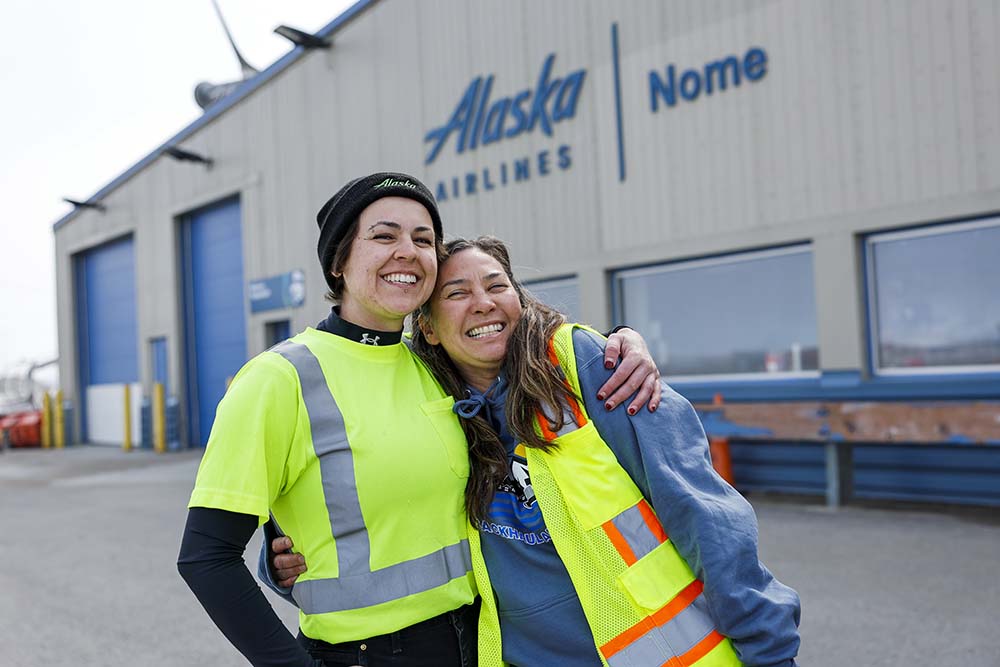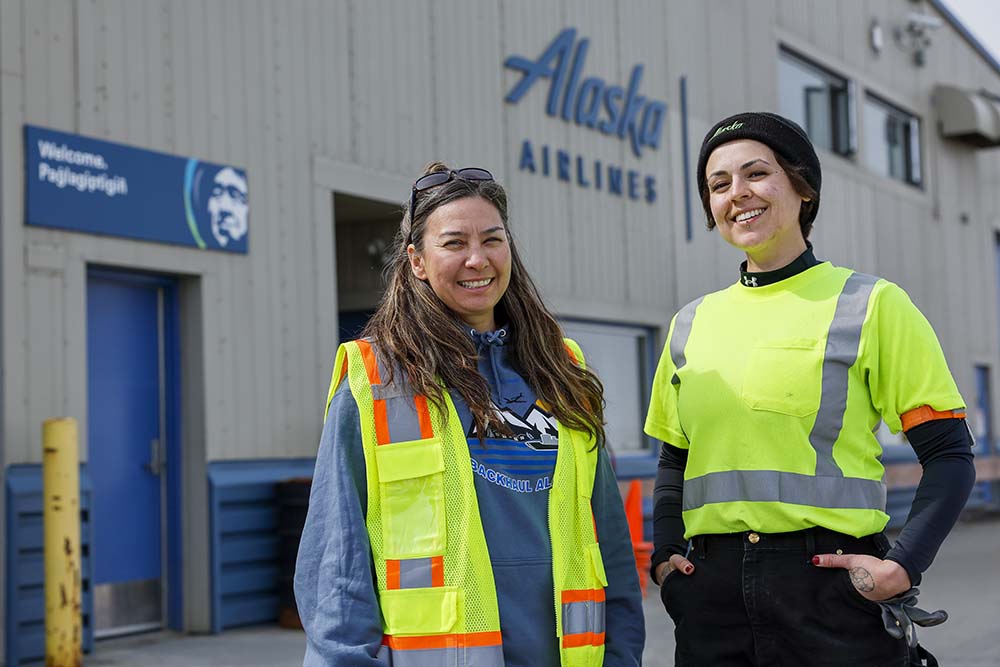Alaska Airlines employee sparks innovative recycling tactic in Nome, Alaska, changing the game for Cargo business & planet
Share
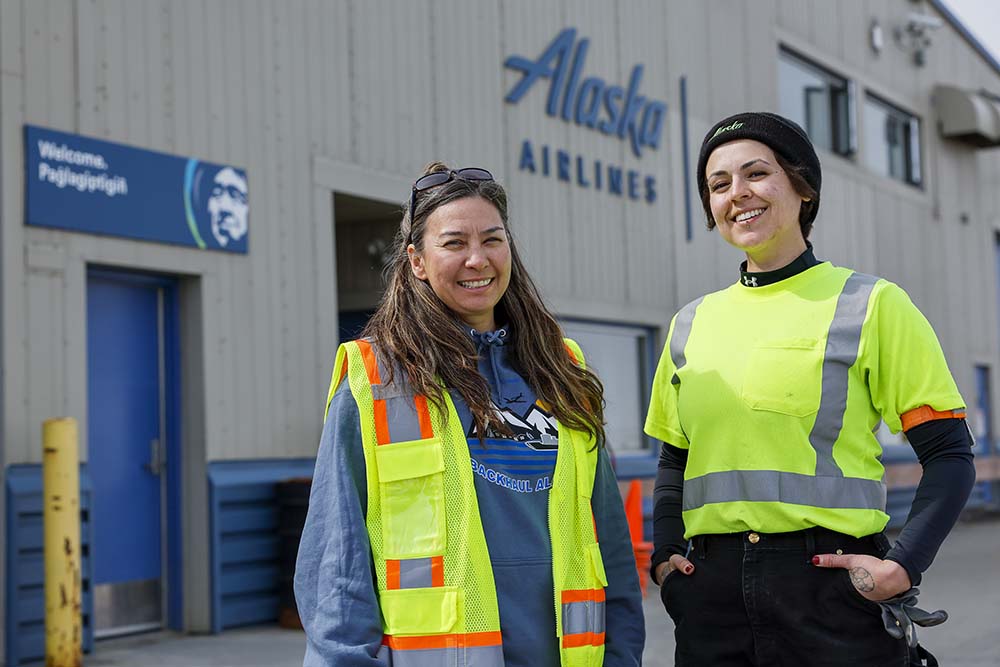
Alaska Ramp Agent Auk Tozier, right, and Anahma Shannon, environmental program director of Kawerak, Inc., left, have worked together on a program to backhaul electronic waste from rural Alaska as ballast on cargo freighters. | Photos by Joe Nicholson
Living in Nome, Alaska, which is famously only accessible by air, sea and dogsled, Caitlin Auktweenna “Auk” Tozier knows intimately how important it is to recycle.
Tozier has been an Alaska Airlines ramp agent for more than three years and also works as a technology specialist at Kawerak, a Native nonprofit corporation in Nome that supports the region through programs ranging from education to natural resource management to economic development.
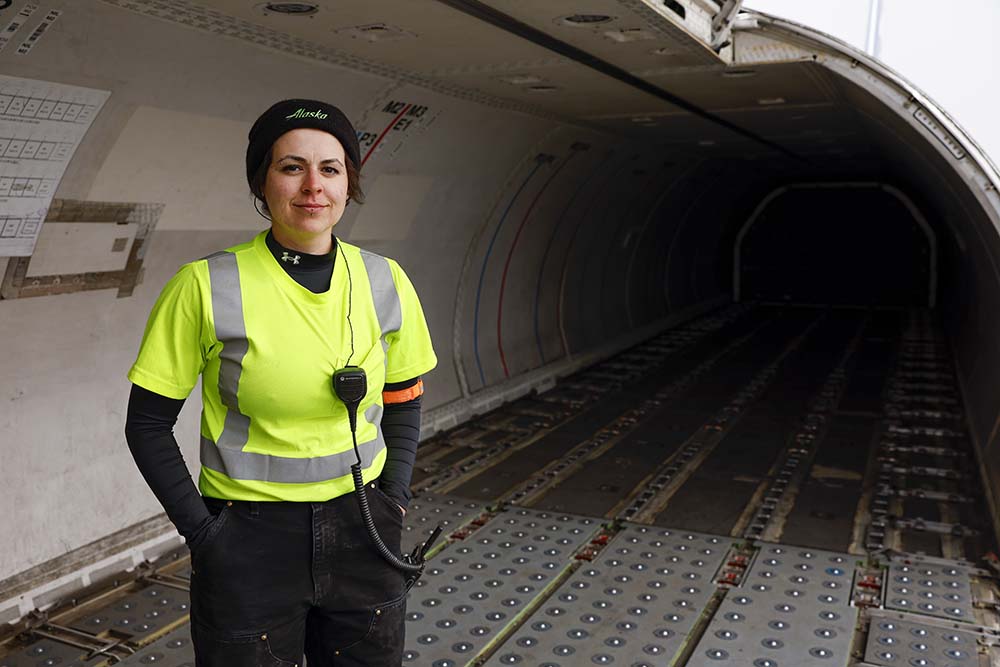
Through her work with Kawerak, Tozier has observed her community’s efforts to collect recycling, which sometimes sits for months waiting for space on barges headed to Seattle. Materials come in and never leave, she said. Sometimes, it’s heavy equipment, lead-acid batteries, electronics — things that are usually expensive to transport and unhealthy for the environment if left unattended. So, Tozier was inspired to do something to fix it.
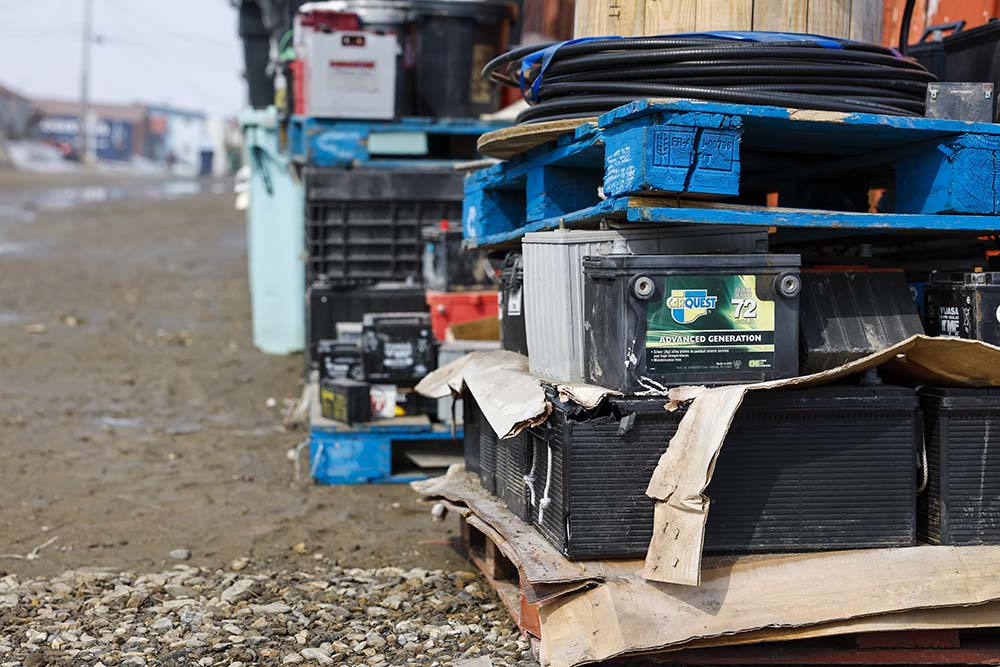
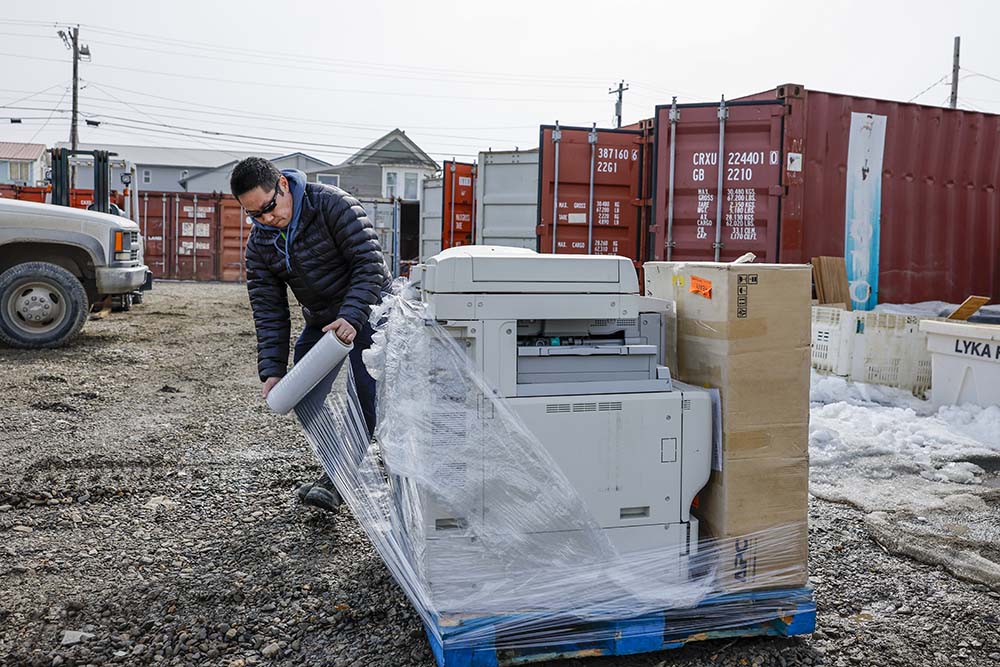
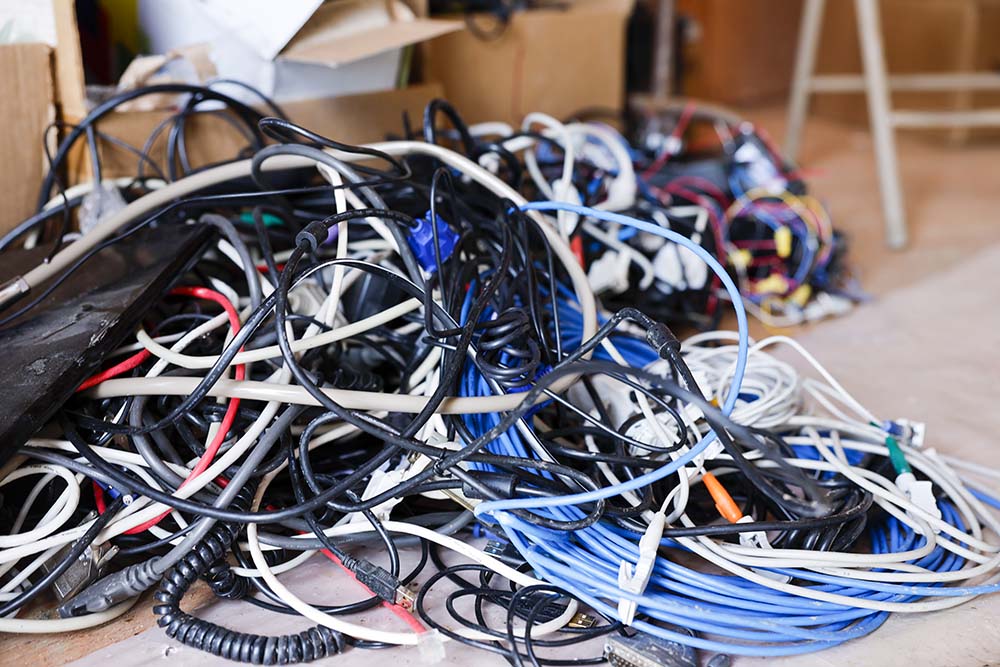
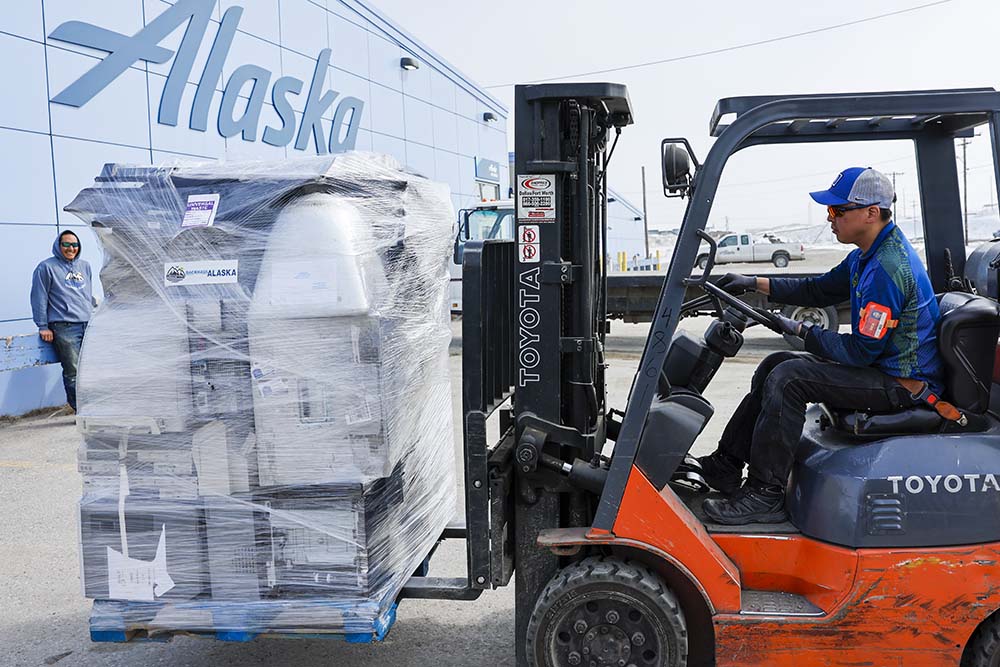
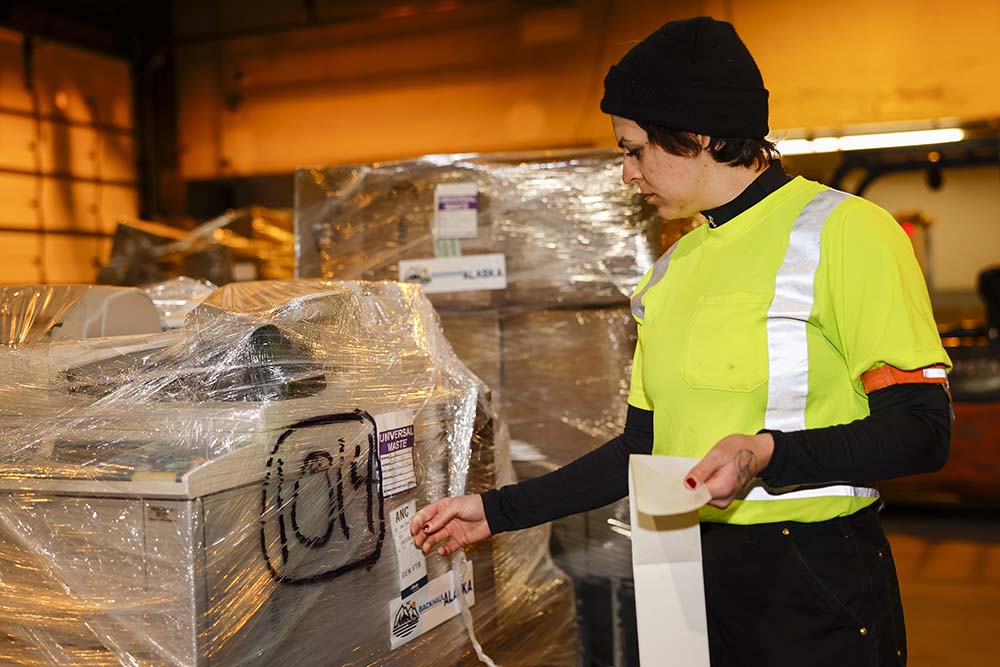
As part of her job as a ramp agent, Tozier fills and loads water jugs used as ballast, a process in which water or other material is used onboard an aircraft to help control or maintain its stability – something that is needed given the harsh winds often experienced in Nome.
“Rather than send these empty jugs to Nome, and then fill them all with water to send back, I thought, ‘why don’t we just send some of these recyclables?’” Tozier said.
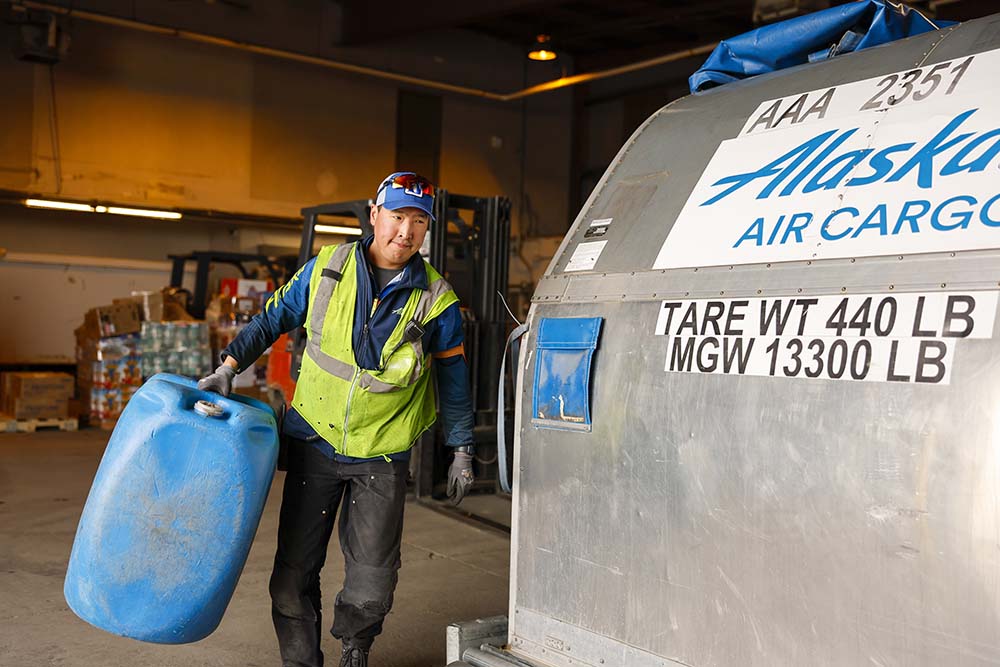
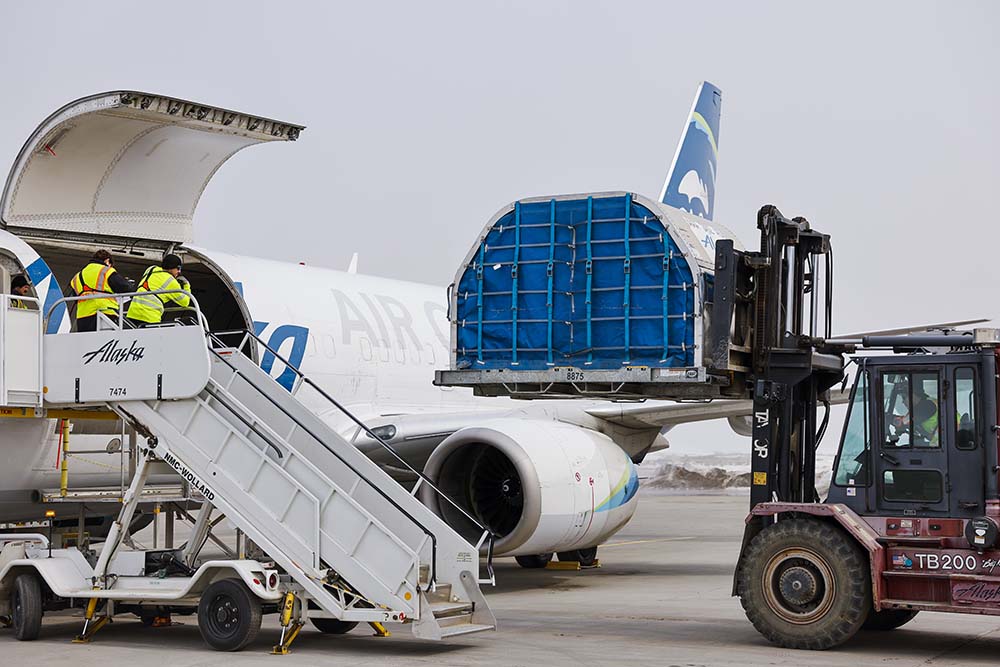
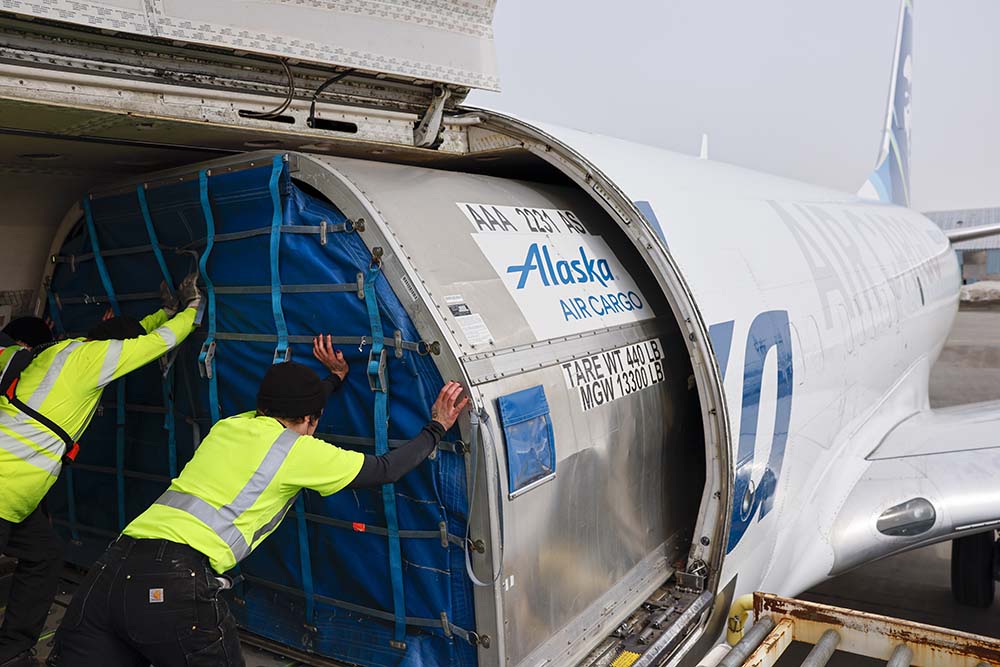
With family roots going back generations in Nome and in the village of Deering on Kotzebue Sound, Tozier was raised to care for her environment — a responsibility embedded deep in her family’s Inupiaq values — and she saw an opportunity to bring those values into her work with Alaska. “Respect for the land and nature is important to us,” she said. “Any recyclables we can carry out won’t have to remain in this community, where we don’t have the resources to process them.”
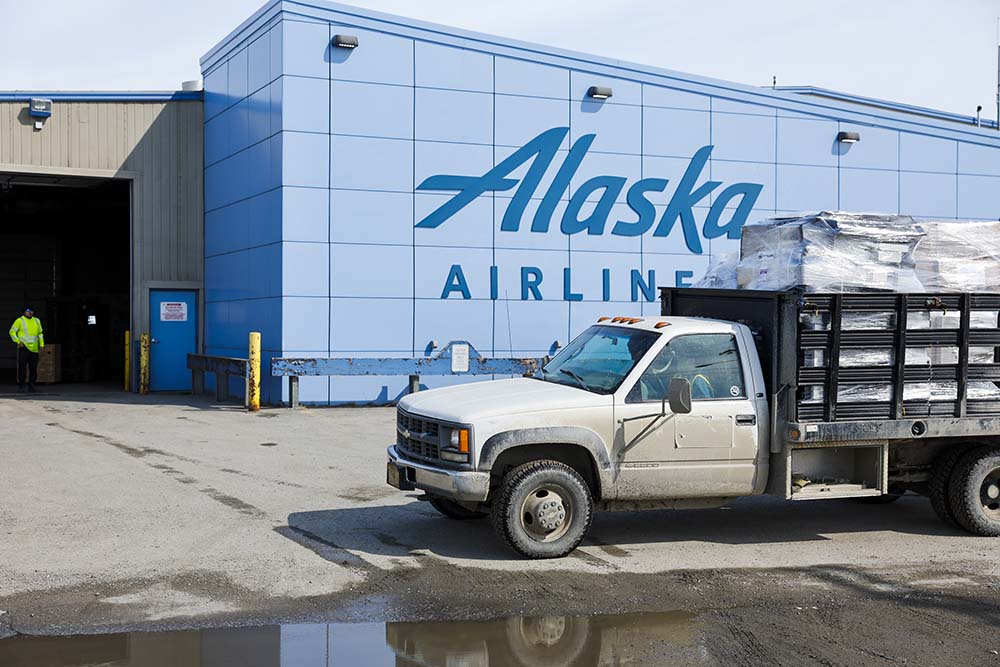
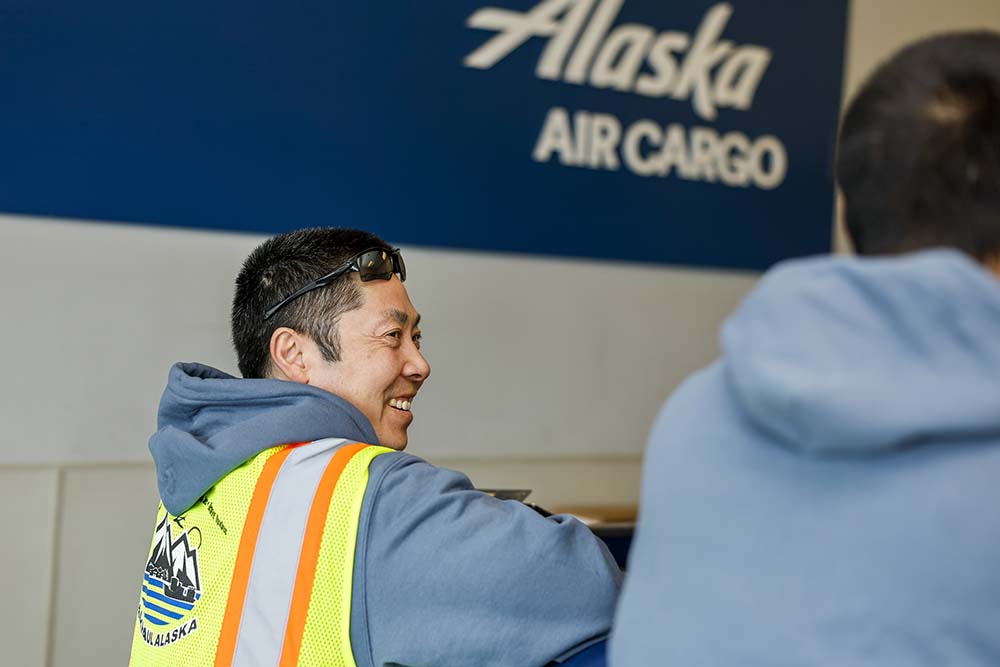
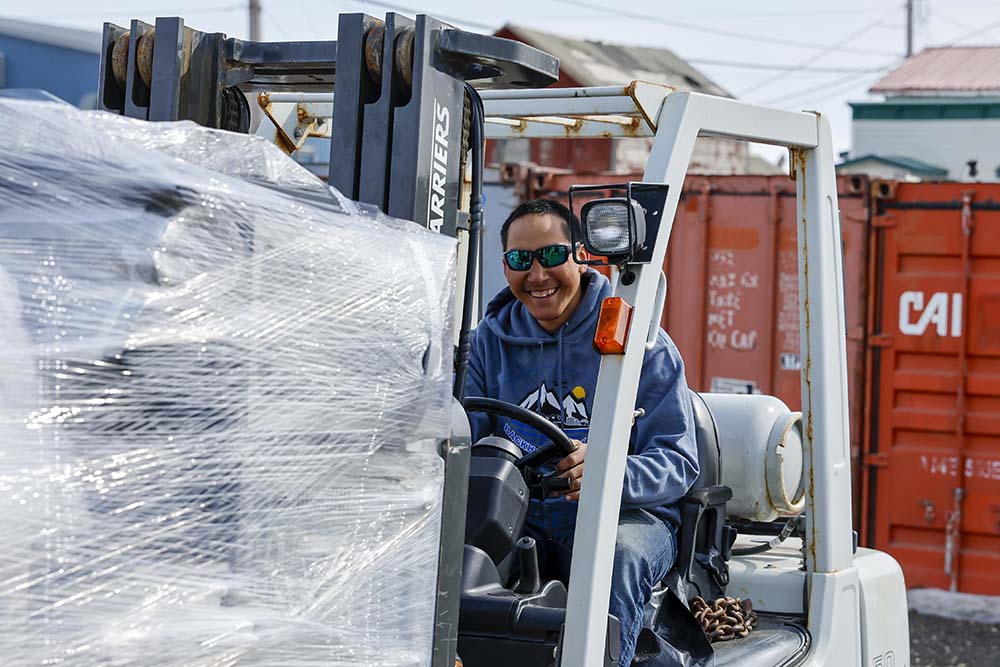
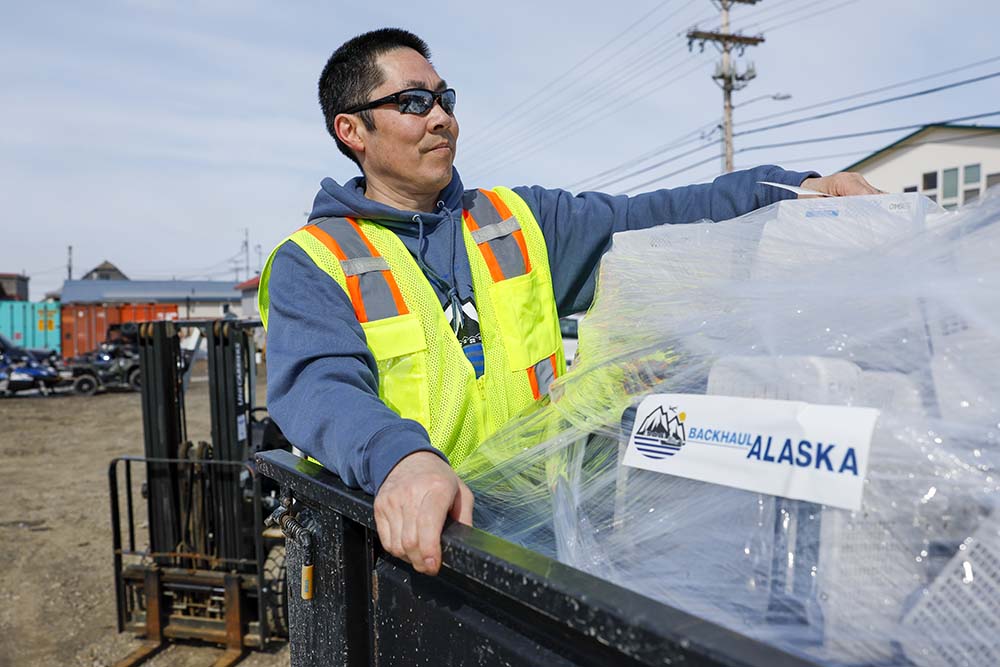
Tozier took the idea to use recycling as ballast to her station manager, Crystal Andersen-Booth, and the Alaska Air Cargo leadership team. The team agreed and actions were set in motion.
Following successful test runs last summer (before the ground froze in Nome), this spring, Alaska Air Cargo launched a program to carry up to 50,000 pounds of recyclable waste each year out of Nome, supporting clean-up efforts in rural communities along the Bering Sea and saving valuable water resources – all thanks to Tozier’s inventive thinking. The recyclables are collected from 16 communities around the Seward Peninsula Bering Strait region and packed onto pallets by Kawerak employees.
“Empty planes fly much better with ballast, but instead of moving water and throwing it away, we’re going to use clean electronic scrap as ballast and really do something good for the community,” said Jeff Olver, Alaska Air Cargo director of cargo operations for Seattle and the state of Alaska. Because the recyclables will replace water jugs that had been filled in Nome to create the ballast weight, this program will also save more than 6,000 gallons of local water each year — the equivalent of 20 days of water used by an average American family household.
The new recycling program joins initiatives across Alaska Airlines to reduce Alaska’s environmental impact , and allows a smaller airport like Nome to contribute to the company’s larger recycling efforts in a big way.
Our rural terminals don’t have the same resources as our bigger terminals companywide,” Tozier said. “We are responsible for bringing a lot of consumables into the community, [and we need to take responsibility] so they don’t all end up in the landfills, which are running out of space.”
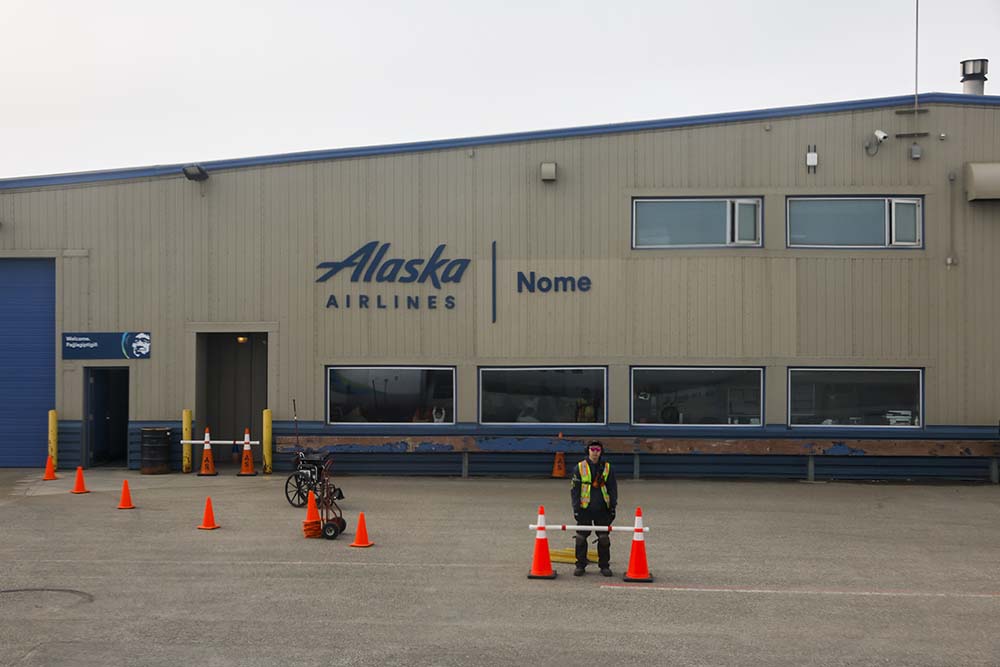
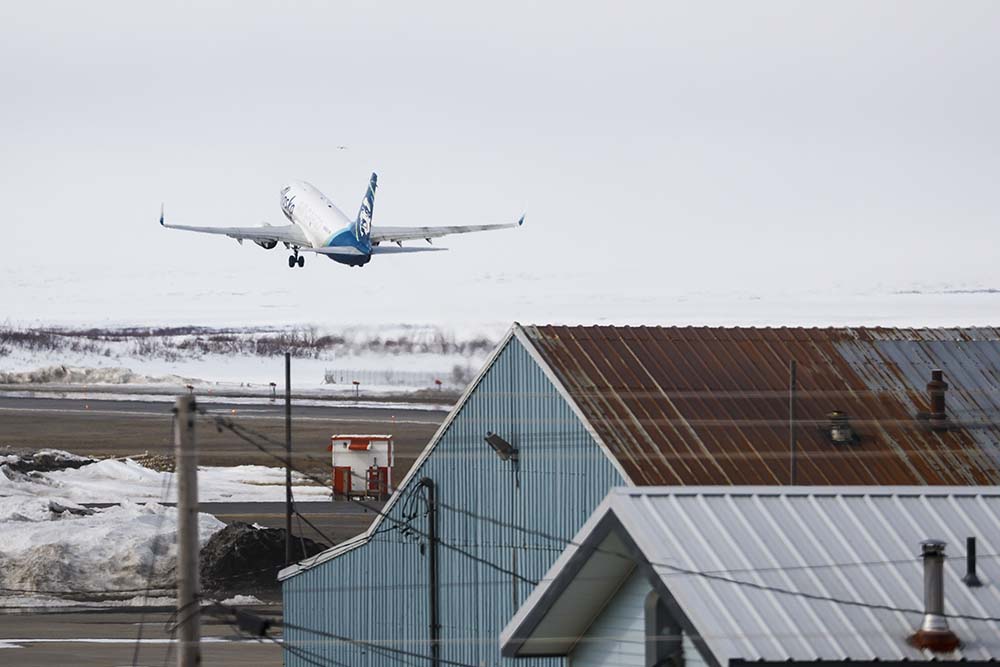
What it means to the communities around Nome
Rural communities, like Nome, regularly burn trash at the landfills to make room for more waste. By creating a system to get recyclables out of communities we serve, we’re helping them maintain a clean environment, improving human health and also reducing our reliance on clean water.
For over a decade, Kawerak has been partnering with regional carrier Bering Air to move clean recyclables like electronics, lead-acid batteries, and fluorescent bulbs from smaller communities to Nome, where it often sits to wait for the barge space.
“People save their recyclables so they can be backhauled,” said Anahma Shannon, environmental program director at Kawerak. “They want to protect their environment here because they know how essential it is to their livelihood and the subsistence way of life.”
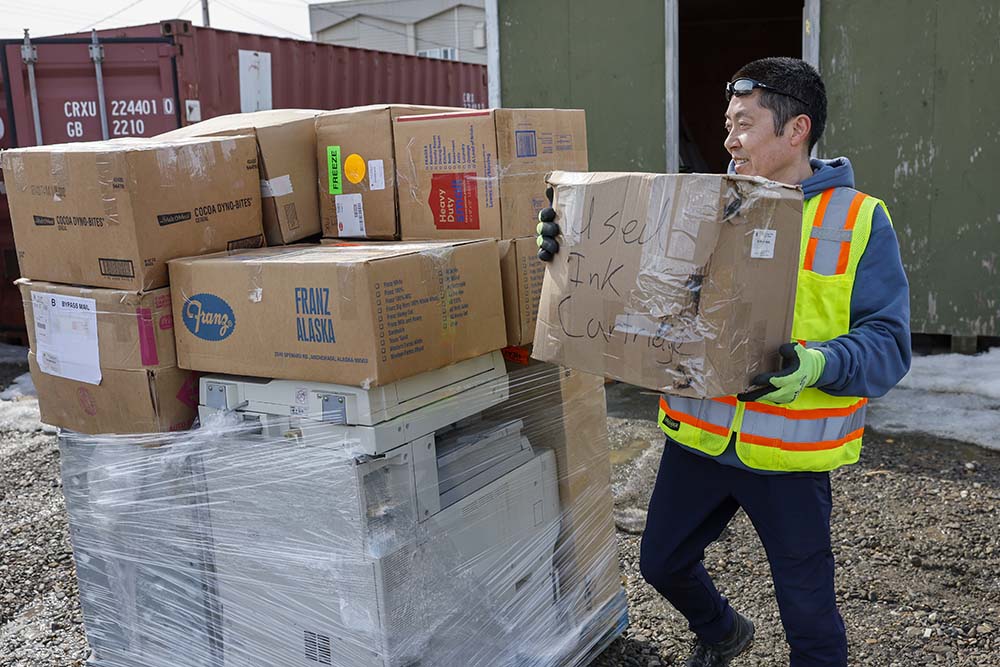
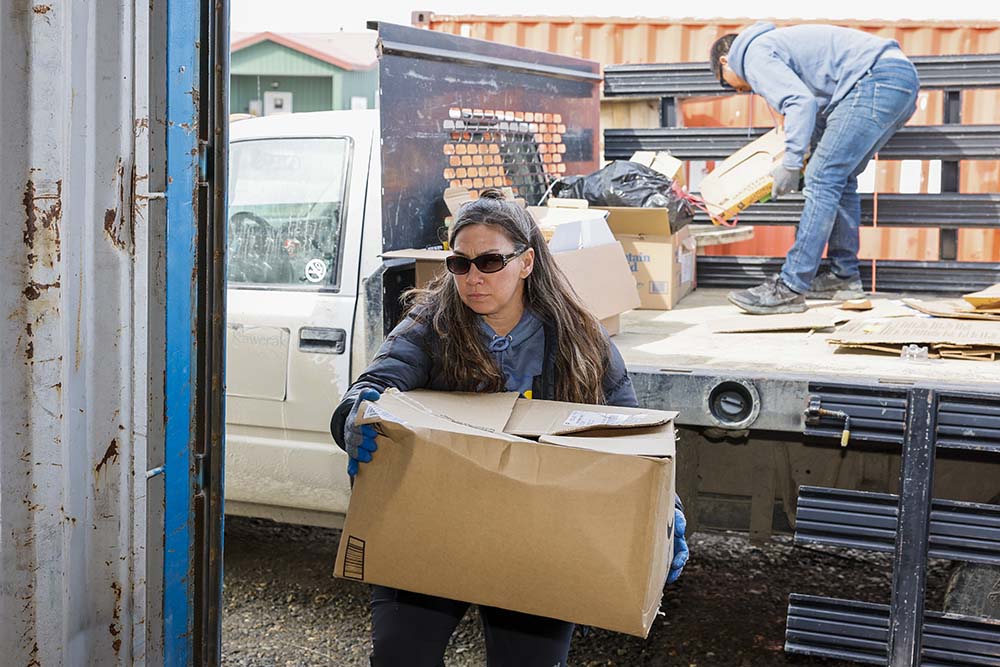
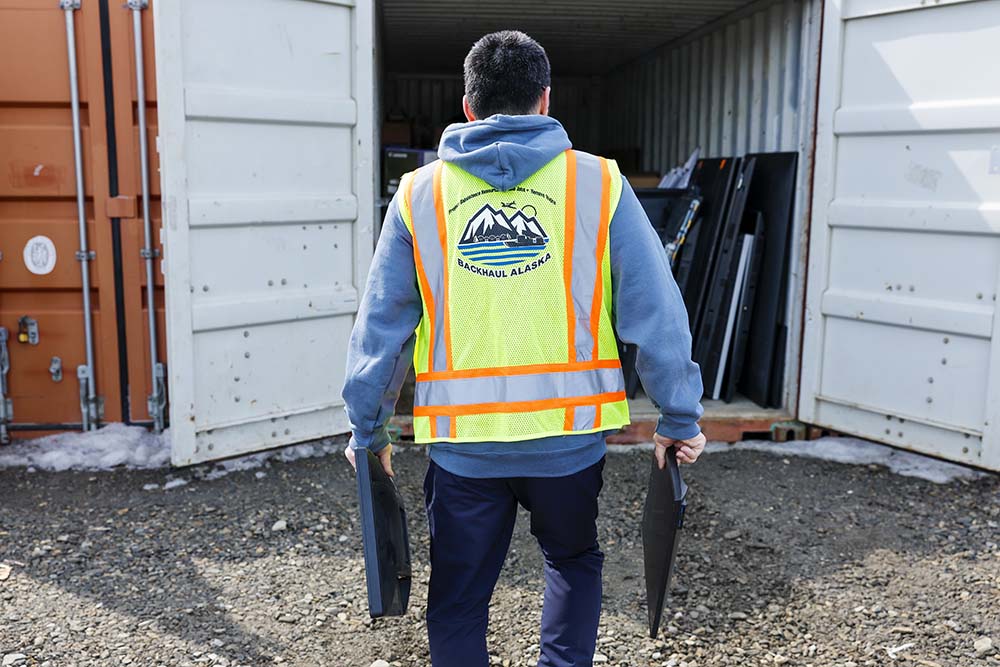
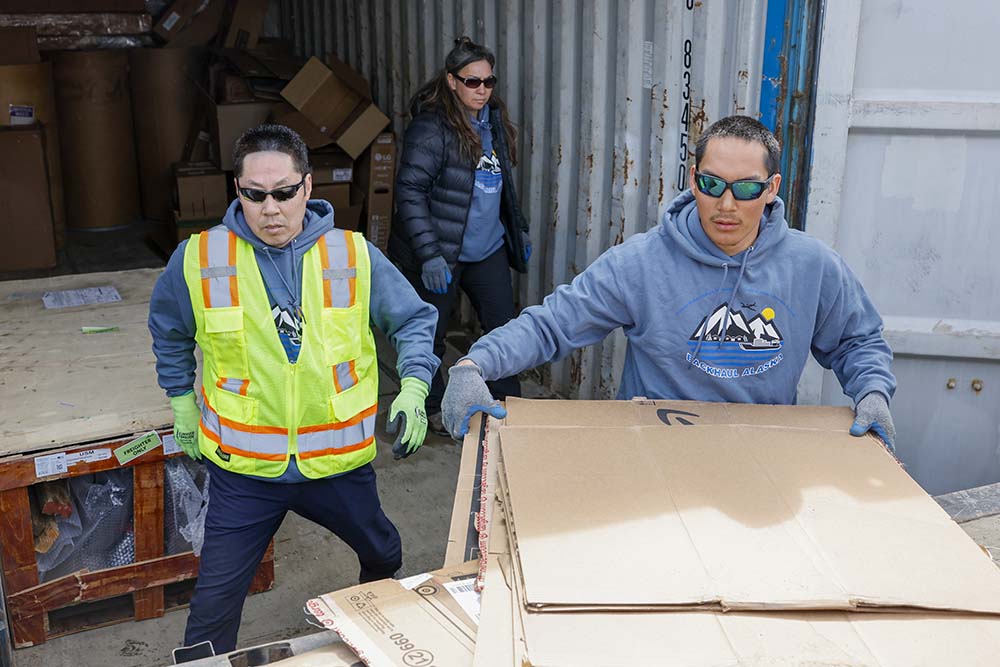
The new partnership with Alaska Air Cargo will allow more of the electronic waste to leave Nome each year and reach recycling plants in Seattle faster. Eliminating wasted water is important to the community, too.
The opportunity to expand to other communities
Alaska Air Cargo is open to working with other community organizations to expand the program to carry recyclables out of other regions across the state of Alaska. “This starts with Nome but has the potential to benefit a lot of communities as part of our longstanding commitment to the state of Alaska,” Olver said.
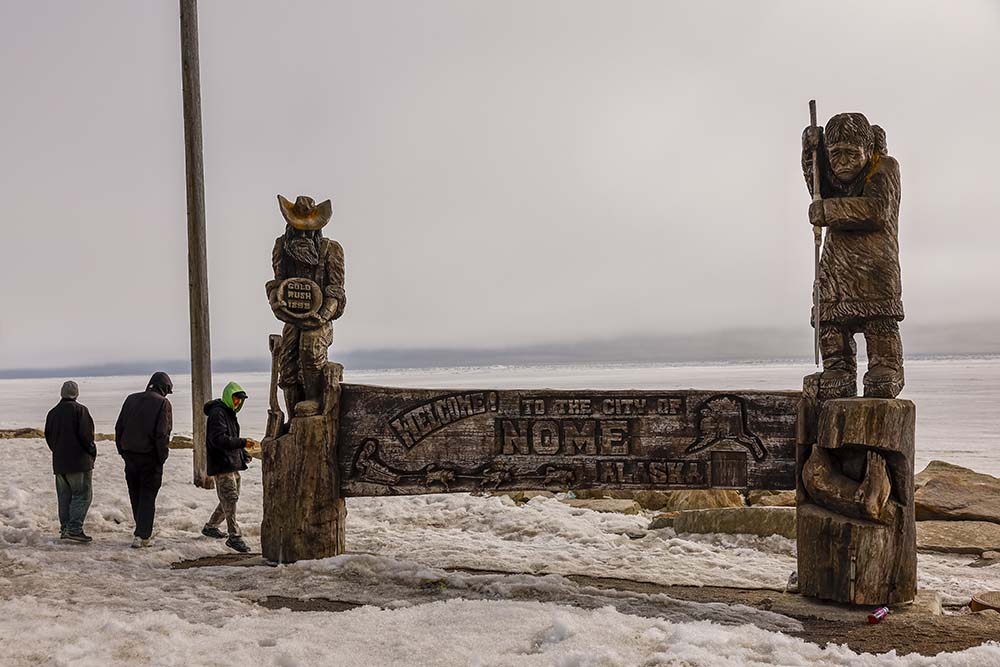
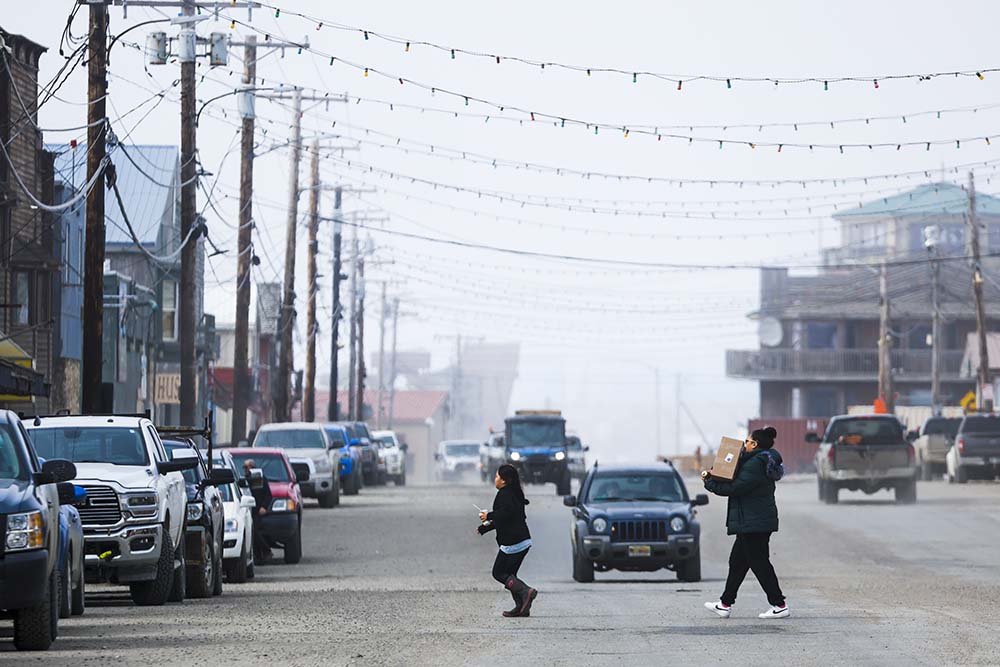
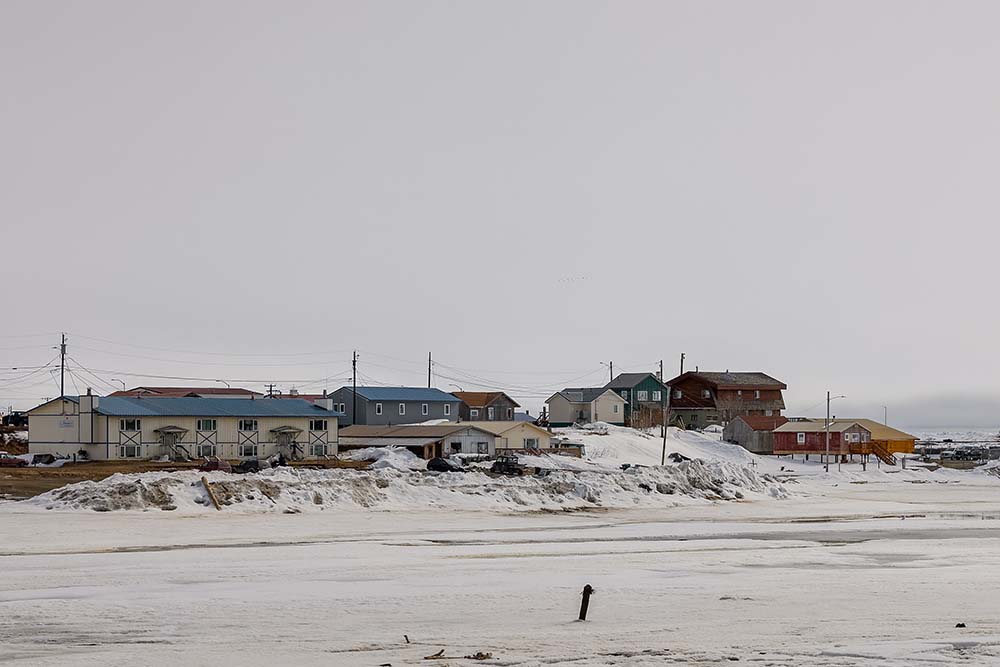
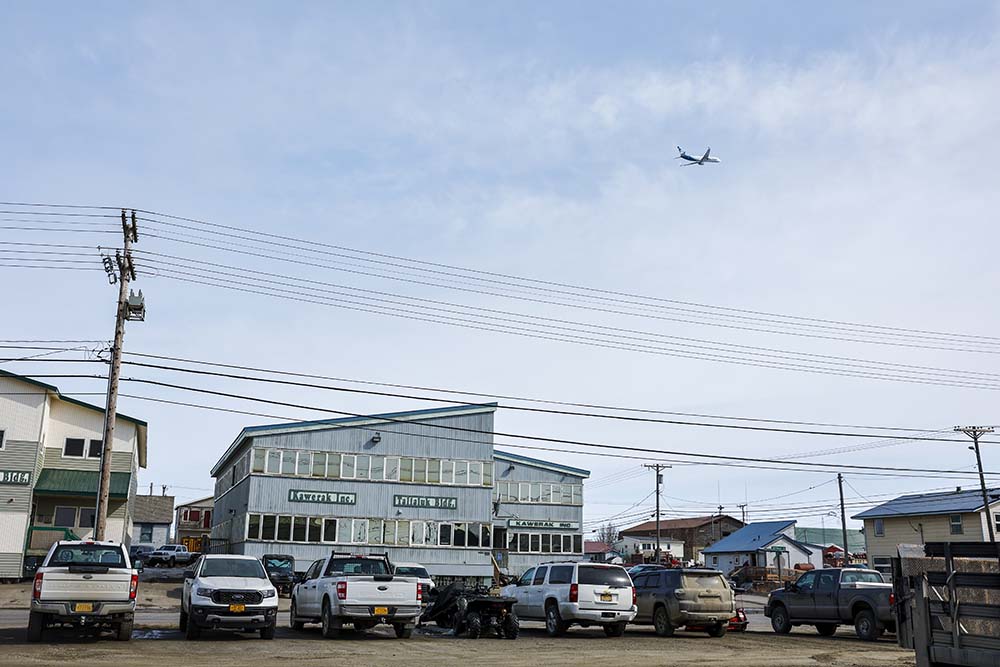
The biggest benefit is to public health, Shannon said. “People here rely on their environment for subsistence resources all year long,” she said. “They eat the meat, the berries, the greens, they drink the water, and they breathe the air of our environment. The great part about doing this work is that you know you’re contributing to the health of our region’s people.”
